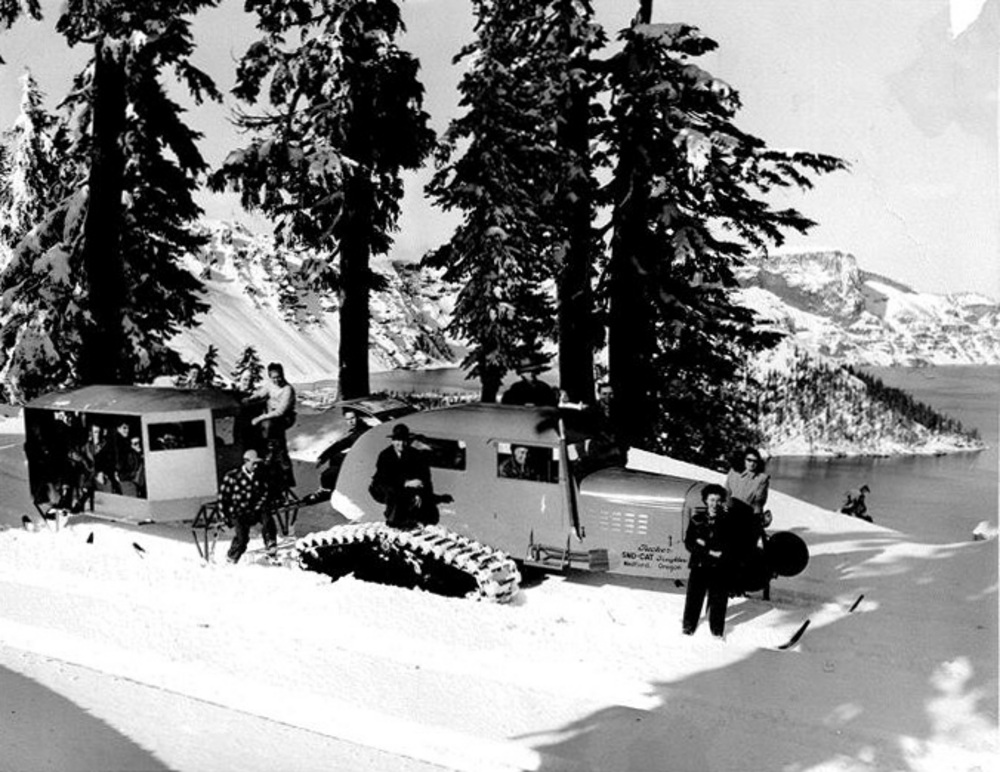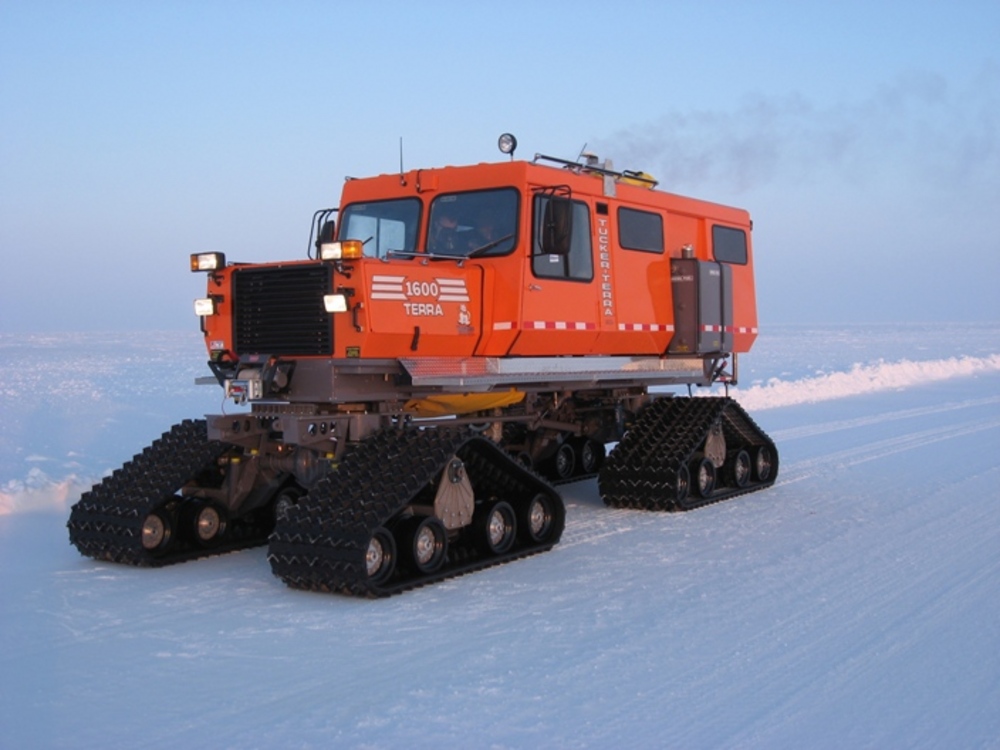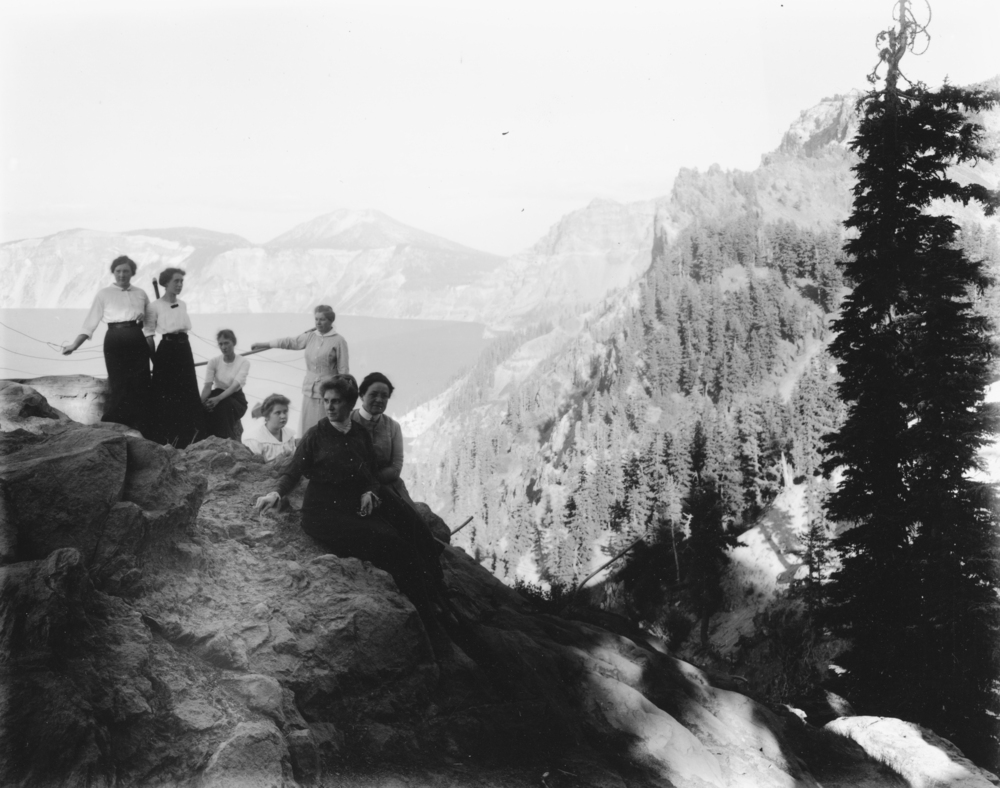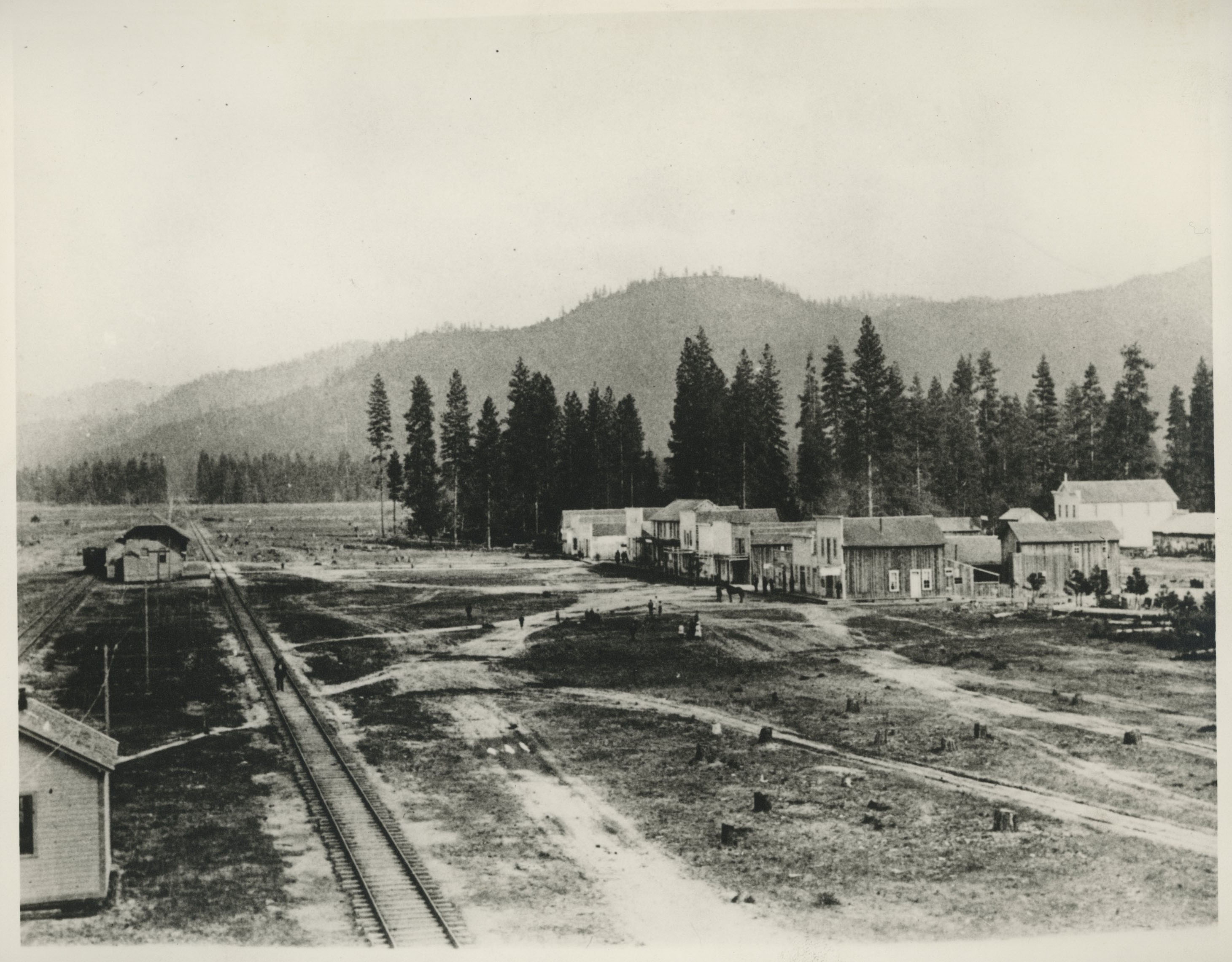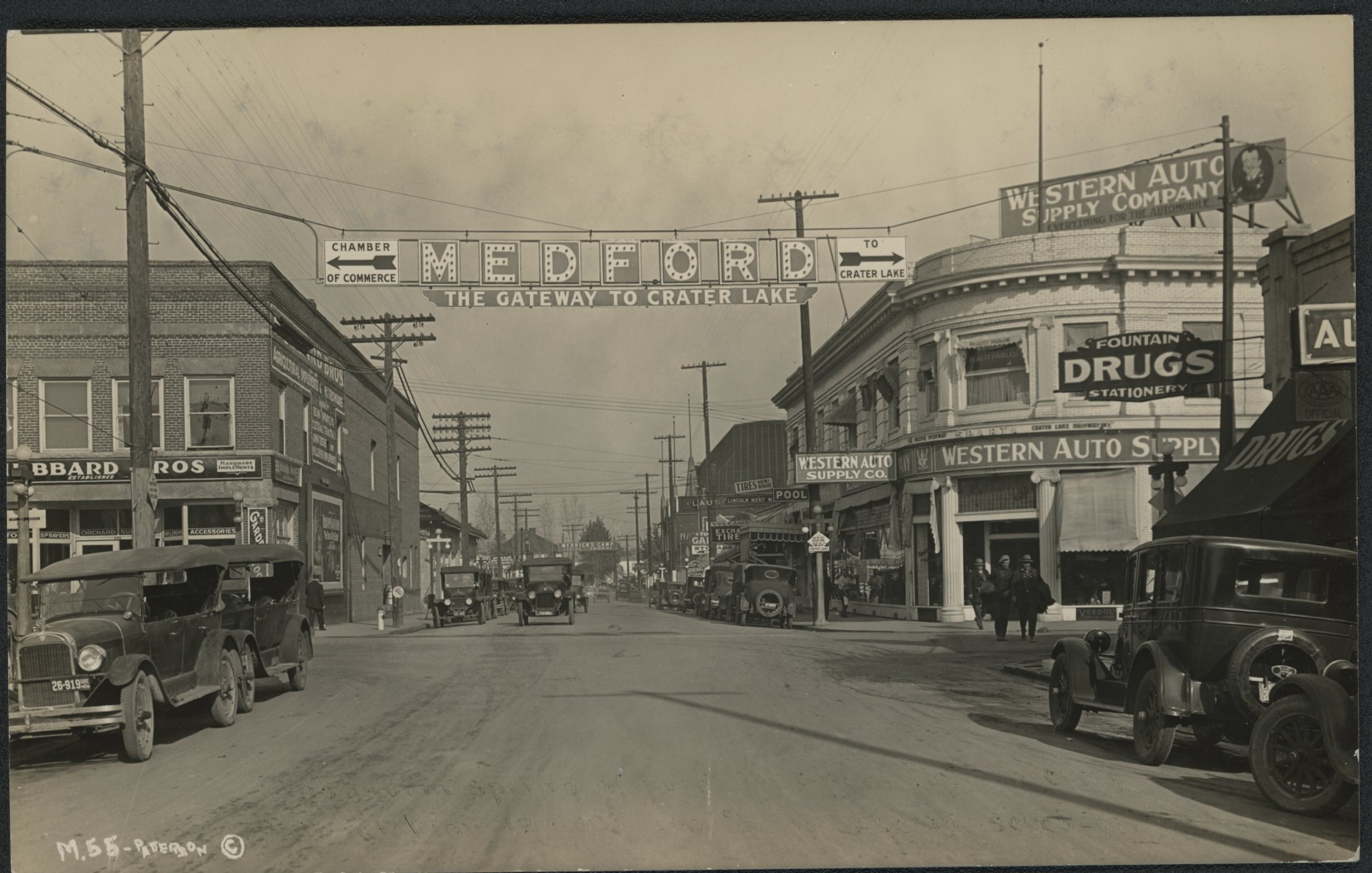When Emmitt Tucker was a young boy in northwest Jackson County, he walked to school in the deep snow, just like his schoolmates. What was different about Tucker is that he did something about it. The founder of Tucker Sno-Cat® Corporation of Medford, one of the world's oldest and most successful makers of snow vehicles, Tucker built snow machines. The company’s motto is "No snow too deep. No road too steep."
E.M. Tucker Sr. was born in 1892 on Jump Off Joe Creek near Grants Pass, and he grew up near Trail. As a young man in the 1920s, he recognized that there was a market for machines that would travel on snow. He developed several snow vehicles based on a spiral-drive that corkscrewed through the snow.
That early design was never the right combination of flotation and traction, but by 1938 Tucker came up with a revolutionary new design that allowed the pontoons to float on the snow, surrounded by a steel track. By the winter of 1941, he had a prototype built, which he successfully launched at Crater Lake. Within a few years, in March 1948, he was demonstrating the snow machine on a 600-mile, midwinter trek from Mount Shasta to Mount Hood, traveling over snow-buried trails and logging roads. Perhaps the most famous test of Tucker's snow machines was by the English explorer Sir Vivian Fuchs, whose team used four of them in the first overland crossing of Antarctica in 1958.
Tucker's snow machines have evolved over the years. Early Sno-Cats®—and the smaller Sno-Kittens®—used steel pontoons surrounded by a steel track. Later, the steel pontoons were replaced by fiberglass, and a modern design called the Terra Track system was introduced in which a series of wheels drove the multi-ply rubber track forward. Today's Tucker Terra® uses four- or six-cylinder diesel engines and standard automotive parts. Most of Tucker's snow machines are designed with two- or four-person cabs, but some models can fit as many as fifteen people and can maintain speeds of up to thirty miles an hour.
Tucker makes custom snow machines for extreme environments, such as the North slope of Alaska. Custom-built machines include an ambulance and the Agri-Cat®. The snow machines can accommodate blades, brush cutters, and snowblowers, and models are available with ice drills, forklifts, dump trucks, and knuckle booms. There are models for trail grooming and snow removal, for exploration, mining and drilling, for agriculture and telecommunications, for military and cargo transportation, for search-and-rescue, and for avalanche control. Tucker's snow machines are certified for the Alaskan tundra and are widely used for pipeline inspection and maintenance.
The Tucker corporation remains a family-owned business in Medford, with distributors around the snowy world. With a workforce of about thirty-five employees, Tucker produces as many as 120 snow machines a year, depending on economic and weather conditions. There is also a thriving collectors' market for vintage models.
-
![Tucker family and friends at Crater Lake, 1949.]()
Tucker family and friends at Crater Lake, 1949.
Tucker family and friends at Crater Lake, 1949. Copyright Tucker Sno-Cat Corp.
-
Tucker 1600 Series 14-Passenger.
Tucker 1600 series 14-passenger vehicle. Copyright Tucker Sno-Cat Corp.
-
Tucker Model 2000XL.
Tucker Model 2000XL. Copyright Tucker Sno-Cat Corp.
Related Entries
-
![Crater Lake National Park]()
Crater Lake National Park
Crater Lake National Park, which the U.S. Congress set aside in 1902, i…
-
![Grants Pass]()
Grants Pass
Located on the Rogue River about thirty miles northwest of Medford, Gra…
-
![Medford]()
Medford
Medford, the county seat of Jackson County, was platted in 1883 in the …
Related Historical Records
Map This on the Oregon History WayFinder
The Oregon History Wayfinder is an interactive map that identifies significant places, people, and events in Oregon history.
Further Reading
Atwater, Montgomery. "Cats That Walk On Snow." Mechanix Illustrated, January 1957, 68-71.
Siuru, Bill. "These Cats Now Prowling More Than Snow." Diesel Progress North, March 1, 2001.

